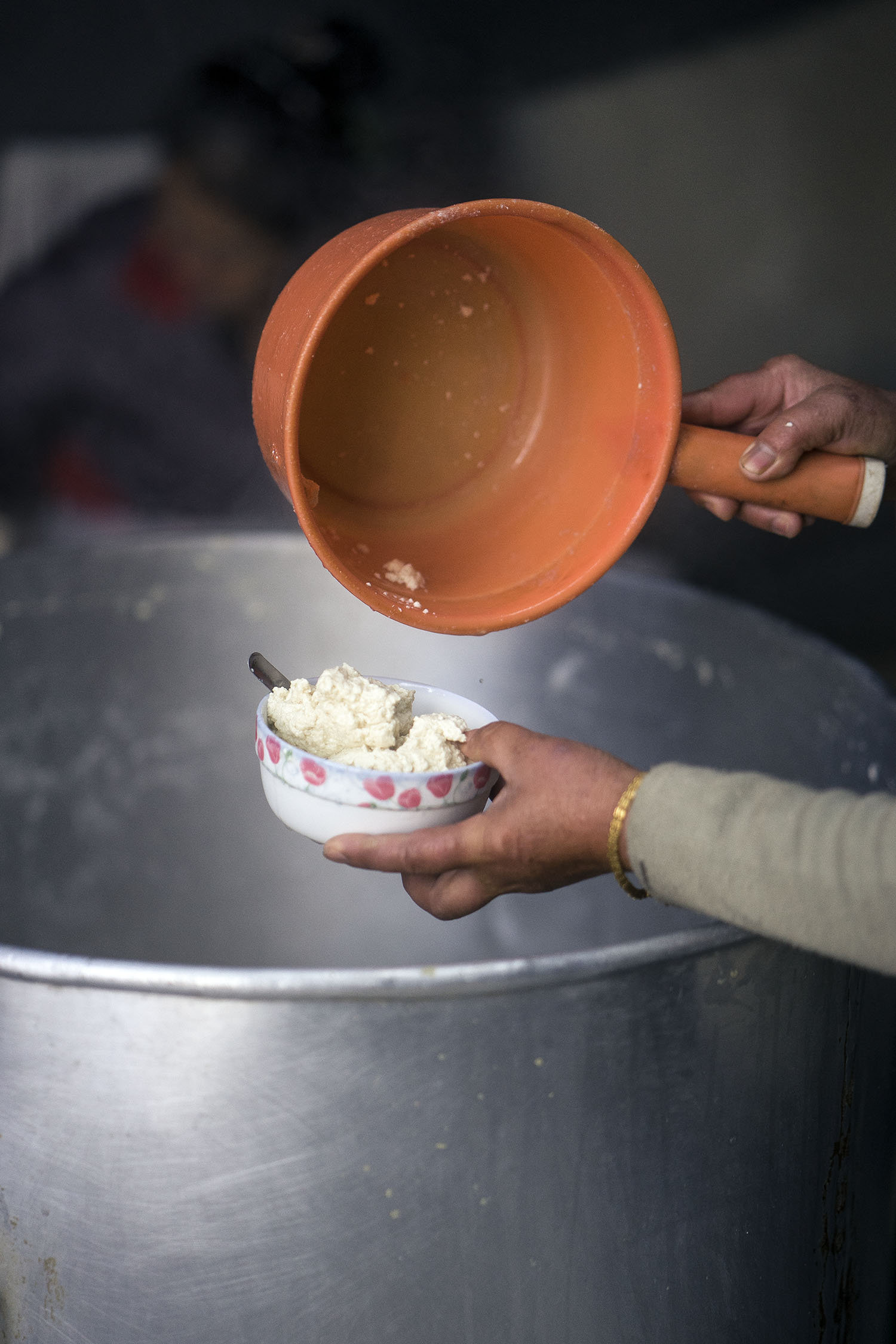LEARNING TO LOVE TOFU AGAIN, YUNNAN
After almost two months of eating anything and everything offered to us in China, we had just about given up on tofu. Leigh and I, unlike the rest of China, did not consider stinky tofu a delicacy. We tried, believe me, we tried. Doused in chilli oil ('surely this will mask the garbage-juice taste?'), nope. Stir-fried with fragrant greens (cooking is supposed to abate the stench), nope. No matter how many times we gave it a go, the fermented stink was a sensory assault, a pooey slap in the face. Often stinky tofu would even masquerade as regular tofu, the odourless pillows launching wretched attacks on us as we innocently took a bite.
We were a failure to all Chinese food-lovers – tofu had to be blacklisted.
That is, until we arrived in Jianshui – a town famous for the stuff. We didn't come here for it, of course. We came to relax, walk the cobblestone streets and buckle down to some serious work. But, come dinnertime, it seemed like tofu was all that was on offer. The streets were a never-ending cavalcade of smoky grills all covered with the white squares, and each with their own dedicated tofu master tempting us in. Tofu was everywhere we looked. Google brought up surprisingly little information on Jianshui tofu, and the handful of bloggers who wrote about their experience never really clarified the flavour. While there was no obvious smell, we had been burned by non-smelly tofu before so just avoided it. We ordered only noodles for the next three days.
It was a bunch of old gals that finally snapped us out of our illegitimate tofu fear. Jianshui is known for its tofu because of its other famous attraction, its historic water wells. Scattered throughout the town's back alleys are ancient wells of all shapes and sizes, filled with ever-replenishing fresh water and still used daily by the Jianshui locals. The wells are dedicated to different things; the West well is used for drinking, while the water from the Dongjing well is said to be sweeter – perfect for brewing tea. It's the Ximen Daban well that's favoured for tofu, known to make it tender and tasty.
Exploring the side streets surrounding the Ximen well, we began to poke our heads into some of the nearby tofu factories. We were mostly ignored, the workers busy behind smokescreens of steaming soy milk, but not for long. A group of chatting ladies were gathered around a big pot of hot, fresh beancurd, each squeezing a bucketful into tiny, tight squares. They beckoned us in, offering two little stools for us to sit down and join them. We stepped into the warm factory, the sweet smell of soy milk lingering in the air. Without warning, two big bowls of freshly cooked warm tofu were thrust into our hands, and Liang San Chi, who was running the factory started pouring a mountain of sugar into each. Not wanting to offend, I had a small spoonful, mouth-breathing the entire time and prepared for the worst. But, of course, made fresh just minutes ago there was definitely no stinkiness here. The tofu was creamy and delicate, with just the tiniest sour tang.
The ladies chatted away to each other, and occasionally to us, but also spent a good chunk of time just laughing at our hopeless conversation skills – a common occurrence throughout our trip in China. After the soy beans are ground and the soy milk is extracted, it's boiled in a big vat and mixed with gypsum to coagulate the mixture. The hot curds are drained and the women scoop tiny balls of the fresh tofu into a little square of cheese cloth, squeeze out the excess water and lay them out into little rows. They're then unwrapped, dried a little and transferred to crates which are sold to restaurants throughout town, forgoing the fermentation process used to make stinky tofu.
Liang San Chi told us they use water from the Ximen well – the water an important part of the process as it's used to soak the soy beans in the first step. The women poured fresh hot soy milk for each other, and packaged big bags of the leftover soy bean flour to sell wholesale. Scraping the last scoop of tofu from my bowl, I was happily stuffed, and proud to have finished the entire serving. But once Liang San Chi noticed our empty bowls, she immediately piled them high with two more silky tofu mounds, a big smile on her face. We sat back in our stools with our second servings touched by their generosity; our tofu attitudes changing with every mouthful.
Needless to say for dinner that night we pulled up a chair to one of the many tofu grills in town and ordered every type of tofu on offer: bouncy, custard-like, crispy and dried, but none of them stinky. Thanks to the ladies of Jianshui, tofu was safely back on the menu.
(Side note: the above dried tofu is Jianshui's main version of stinky tofu. It's fermented and dried like a little pre-cooked prawn cracker, and as soon as it's placed on the grill, it puffs up all light and crunchy. While it has a more cheesy flavour, it's definitely not in the gagging range of stinky tofu and is a good 'beginner's-step' into the stinky tofu world.)
Photography: Leigh Griffiths
Words: Eloise Basuki
All words and images are under copyright © 2019 strangertalk.co

















